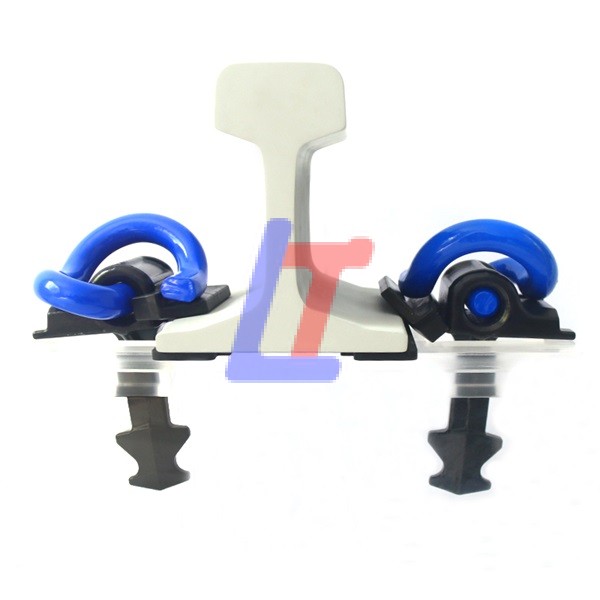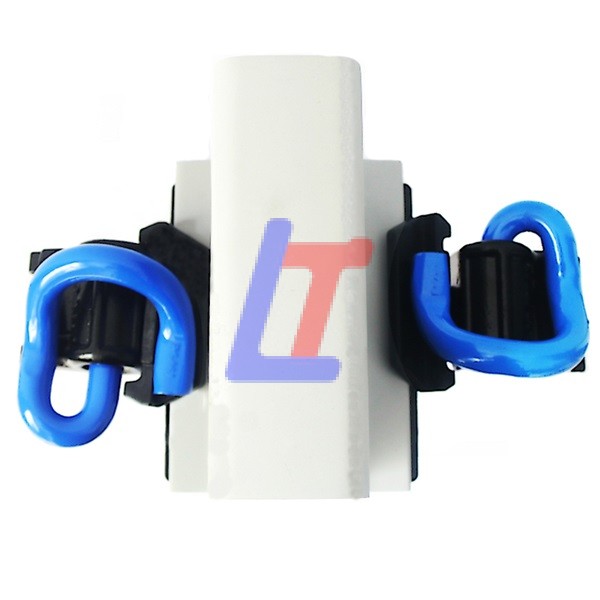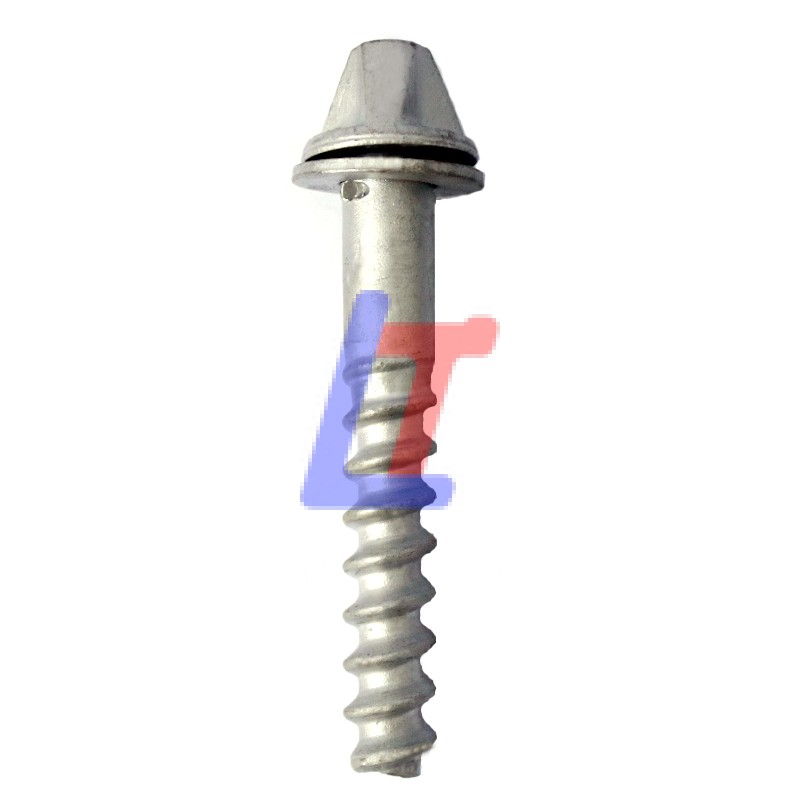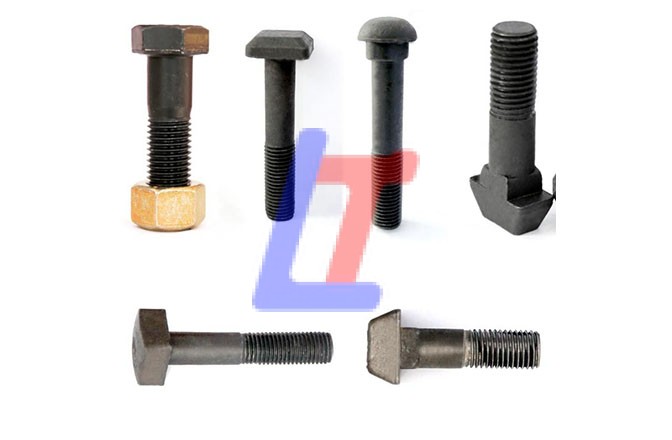On October 3rd, local time in Serbia, Serbia put the Nossu section of the Hungary-Serbia Railway into operation. This marks the full opening and operation of the Serbian section of the Hungary-Serbia Railway. The upgrade has cut the Belgrade-Subotica train travel time from the original 5 hours to a maximum of 1 hour and 19 minutes.
The completed Ferbersta Bridge

A passenger train on the Serbian section of the Budapest-Serbia Railway passed through the town of Karlovic. The Budapest-Serbia Railway connects the capital of Serbia, Belgrade, with the capital of Hungary, Budapest. It is a flagship project of China’s cooperation with Central and Eastern European countries and is the first project to adopt China’s independently developed railway technology and equipment and to obtain the certification of the EU Railway Interoperability Technical Specification (TSI). The total length of this line is 341.7 kilometers, of which 183.1 kilometers are within Serbia and the design speed is 200 kilometers per hour; 158.6 kilometers are within Hungary and the design speed is 160 kilometers per hour.
Passengers take the Hungarian-Serbian Railway

On March 19, 2022, Serbia put the Belgrade-Nis section of the Hungarian-Serbian Railway into operation. Serbia has become the first country in the Balkan Peninsula to enter the era of high-speed rail. The railway upgrade has boosted the trains’ maximum operating speed from 50 to 200 kilometers per hour. The upgrade has reduced the travel time between the two cities from over 90 minutes to about 30 minutes. As a result, the railway now operates an average of 62 passenger trains daily and accommodates over 3.4 million passengers annually. It has received widespread praise from the Serbian government and people.
Power line installation work for the Nossu section of the Hungary-Serbia railway within Serbia
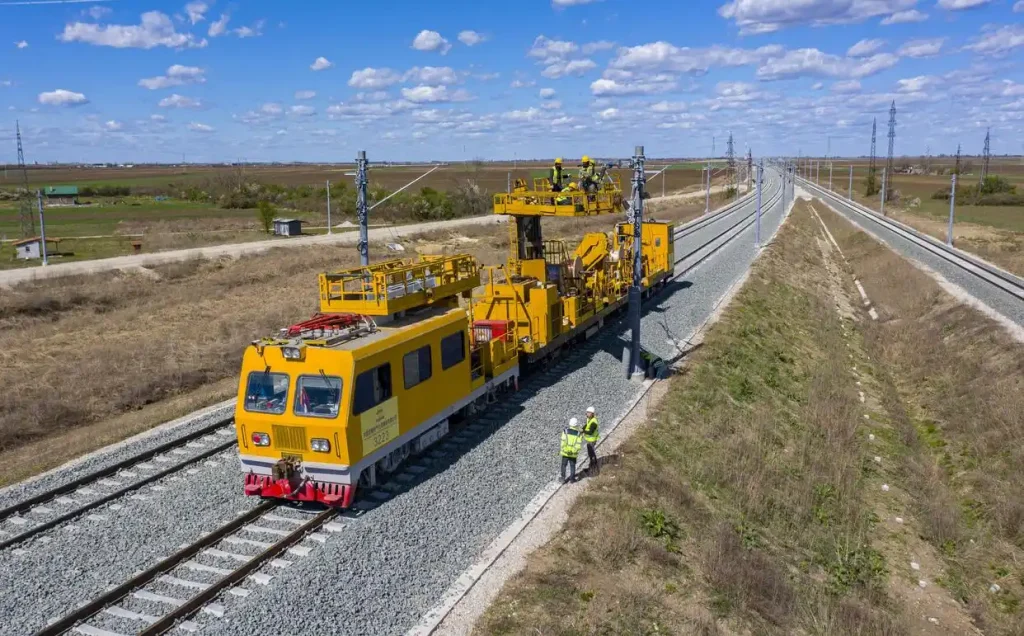
Workers are performing rail welding operations on site. This work is progressing on the new Serbian section between Novi Sad and Subotica. Overall, the line stretches 108.1 kilometers and features 12 stations. Specifically, Vilbas station is newly built, whereas all others are renovations of existing stations. Since the official start of construction on July 1, 2022. By leveraging China’s advanced railway technology and mature construction experience, the Chinese and Serbian workers have optimized site organization, strengthened safety controls, and ensured the project’s smooth progress. During this period, they completed static acceptance, dynamic acceptance tests, passed the EU Interconnection (NoBo) certification, national compliance (DeBo) certification, safety assessment (AsBo) certification, and obtained the permission from the Serbian side, thus meeting the conditions for opening and operation.
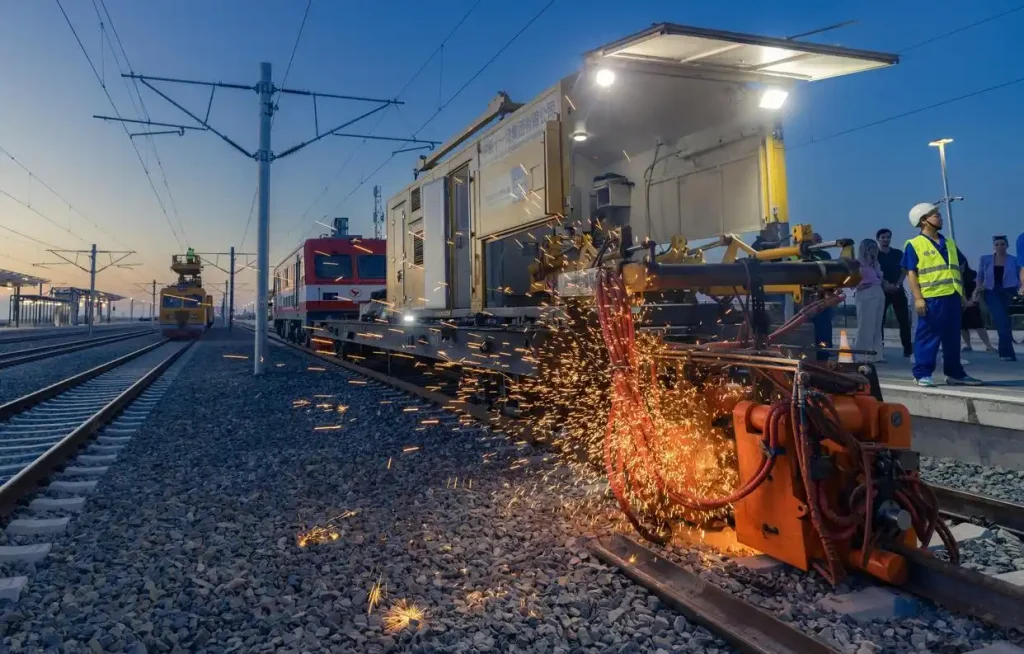
The trains on Serbia’s Nisu section use advanced systems. Therefore, they have adopted the ETCS-L2 control system and other key equipment. All these components were developed by China and have passed EU TSI certification. Since June 2018, during the construction and operation cooperation of the Hungary-Serbia railway in Serbia. The participating construction units from China and Serbia have extensively carried out high-speed rail technology exchanges and training activities. Cultivating a group of high-speed rail construction and operation talents for Serbia. Actively hiring local employees, creating a large number of job opportunities. And purchasing local building materials according to local conditions, promoting the development of industries along the line. Injecting strong impetus into the friendly cooperation between China and Serbia. And further consolidating the iron friendship between the people of the two countries.

Since the opening of the Bento section of the Hungary-Serbia Railway, it has been running smoothly. The picture shows a train running on the line. Thanks to this new line, the launch of the entire Serbian section slashed the travel time from Belgrade to Subotica from over 5 hours to just 1 hour and 19 minutes. The passenger capacity, transportation efficiency and service quality have significantly improved. Which will greatly facilitate travel for people along the route, promote the development of tourism resources and urbanization in the area.

